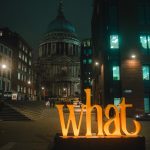‘Migration’ has today become a hotly debated issue, an ideological weapon in an increasingly polarised political landscape. All political actors have split into pro- and anti-migration camps (whatever that even means) and both will tell you this topic is one you must consider when voting for the European elections. E&M’s Nicoletta Enria & Sarah Gerwens unpick this controversial issue, stick to the facts and why you really should consider which legislators you put in the driving seat of EU migration and asylum policy:
The German Interior Minister, Horst Seehofer, once called migration “the mother of all problems”. In the EU, it seems, migration is indeed the parent of several, albeit not all, political woes: infringement procedures against the Czech Republic, Hungary, and Poland; far-right, eurosceptic movements across the continent; and even Brexit. But, it is not migration itself, it’s politics, stupid. Taking in refugees is not a matter of personal or national choice, but a responsibility under international law. Increasing South-North migration, meanwhile, is as much a byproduct of globalisation and continuing global inequalities as it is demographically and economically beneficial for many European countries (not that migrants need or should be “beneficial” to anyone but themselves). What makes migration and asylum a “problem” is an inadequate policy response to them, it is six people dying in the Mediterranean every day, human rights abuses in migrant detention centres in Libya and Europe’s very own Trumpian wall (well, technically, fence).
Political problems are there for politicians to fix (or, for that matter, create). And during the European elections we get to chose some of those politicians, who will decide on European asylum and migration policy for the next five years. Since the adoption of the Lisbon Treaty in 2009, immigration measures are passed through ordinary legislative procedure, meaning that both Council and Parliament amend and vote on them. While individual members states continue to govern decisions on asylum and visa applications and can, for example, opt into or out of readmission agreements with third countries, strategic and larger, systemic issues are dealt with on the European level. This makes sense: shared external borders and (at least in theory) flattened internal ones demand a common policy regarding who gets to cross them – and how. However, as with many things that may make sense in theory, political and practical solutions on the European level remain contentious and, in some cases, nonexistent.
Political problems are there for politicians to fix (or, for that matter, create). And during the European elections we get to chose some of those politicians, who will decide on European asylum and migration policy for the next five years.
What is EU migration and asylum policy today?
It is since 1999 that the EU has been working on creating a legislative framework to streamline European asylum policy, called the Common European Asylum System (CEAS). Now, some of you may be incredulous at the fact that this instrument even exists – due to the incredible incongruence of European asylum policy. The CEAS is like a set of general guidelines on asylum policy procedures. A CEAS reform launched in 2016 has been pushing for it to be more restrictive due to the policy-makers behind them being predominantly national leaders in the Council worrying about bringing back a hard-line migration stance to their electorate. The fact these reforms are also completely blocked due to an impasse on the Dublin regulation, tells you everything about how difficult it is to streamline EU asylum policy today because of the national agendas of its architects.
Indeed, a total lack of congruence between Member States leading to heated disputes means that EU migration and asylum policy is ineffective, and only considered to become more applicable if it becomes more restrictive. This has left major gaps, such as effective search and rescue missions, which civil society and non-governmental organisations have had to fill.
Contentious issues
Without getting into the nitty-gritty details, let’s look at really what the most contentious issues you should be aware of when considering this topic upon selecting your candidate.
Dublin
First, the aforementioned Dublin Regulation is probably one of the best known for stirring up trouble and turning EU member states against each other. So far, the Dublin Regulation sets out that an asylum applicant is the responsibility of the first country they set foot in. This naturally has meant that border countries like Italy and Greece have been stretched far thinner than northern European countries, causing a major resentment between EU Member States. So, what has blocked this reform is the fact that border countries refuse to sign off on anything if there is no agreement on responsibility sharing, and northern countries refuse to dismantle the Dublin procedure they are so fond of. Naturally the most important flaw here is that this system in no way takes into consideration the asylum applicants preferred destination country, which more often than not is dictated by diasporic, familial and linguistic links – rather than the convenience of where you arrive.

Resettlement
Despite many statements on EU commitment to resettlement, referring to resettling refugees from camps to different EU Member States, the figures remain extremely far from the stated targets. In September 2017 Juncker urged member states to pledge to resettle 50,000 people by October 2019. Whilst the goal was to resettle at least 50% of this target by October 2018, only about 8% were actually effectively resettled. Resettlement remains one of the only legal pathways for vulnerable people to seek refuge in the EU. This dramatically low commitment to the resettlement scheme shows blatant lack of commitment to responsibility sharing and legal channels.
Safe country concepts
In an effort to streamline and unify who needs protection and who does not, the EU has introduced the concepts of “safe countries”. These are non-EU countries in which an asylum seeker was, well, safe, and where they could have stayed; where their rights were protected and where they could have requested refugee status. These can either be “third countries”, states which an asylum seeker passes through on the way to the EU, or “countries of origin” (the proposed asylum system reform even offers up a whole list of the latter – with the Parliament quickly removing Turkey from it). Importantly, these safe country concepts can lead to the immediate rejection of an asylum application. “Safe”, however, is an individual rather than a collective concept: countries that are safe for most might be anything but for LGBTI+ people, political dissidents, and others. NGOs and refugee rights organisations, therefore, remain critical of the concept.
Externalisation of borders
Safe country concepts, arguably, result from a larger trend: the externalisation of European borders. Processing and hosting asylum applicants as well as migrants outside of the EU appeases anti-immigration sentiments at home and leaves others to make difficult policy decisions. However, while “out of sight, out of mind” might work for that pile of laundry you’re yet to do, it does not exactly work for people. It does not work for mothers, fathers, children experiencing war, for youths seeking a better life. The Turkey deal might be the most well known example of such externalisation, but it is by far not the only one. The EU, for example, works with authoritarian states and supports efforts to return migrants and refugees to Libya, where many of them are detained under dangerous, even deadly conditions. All in the name of “migration management” – and funded, in the end, by the taxes you and I pay.
The mother of all problems is not migration, it’s the vicious, divisive and nationalist politics behind it.
A recent article in the Financial Times stated, “forget Brussels bureaucrats, it is national leaders which run Europe.” This couldn’t be clearer than in the ambit of migration policy. Indeed, it is not migration itself that is the mother of all problems, migrant and refugee inflows into Europe remain manageable. Europe, and the EU in particular as a bloc, remains one of the wealthiest blocs in the world, and not very heavily populated either. The mother of all problems is not migration, it’s the vicious, divisive and nationalist politics behind it.
This is where you come in: you get to decide who will sit and, thereby, vote in the next European Parliament. Your decision impacts which migration and asylum policies will pass and how they will look like. And these policies matter, for the European economy, our demographics and for all the people losing their lives every day trying to reach the continent.
If you need directions on which party supports what, the EUROMAT can guide your way through the electoral candidates.
Cover photo: TPCOM (Flickr); Licence: CC BY-NC-ND 2.0










